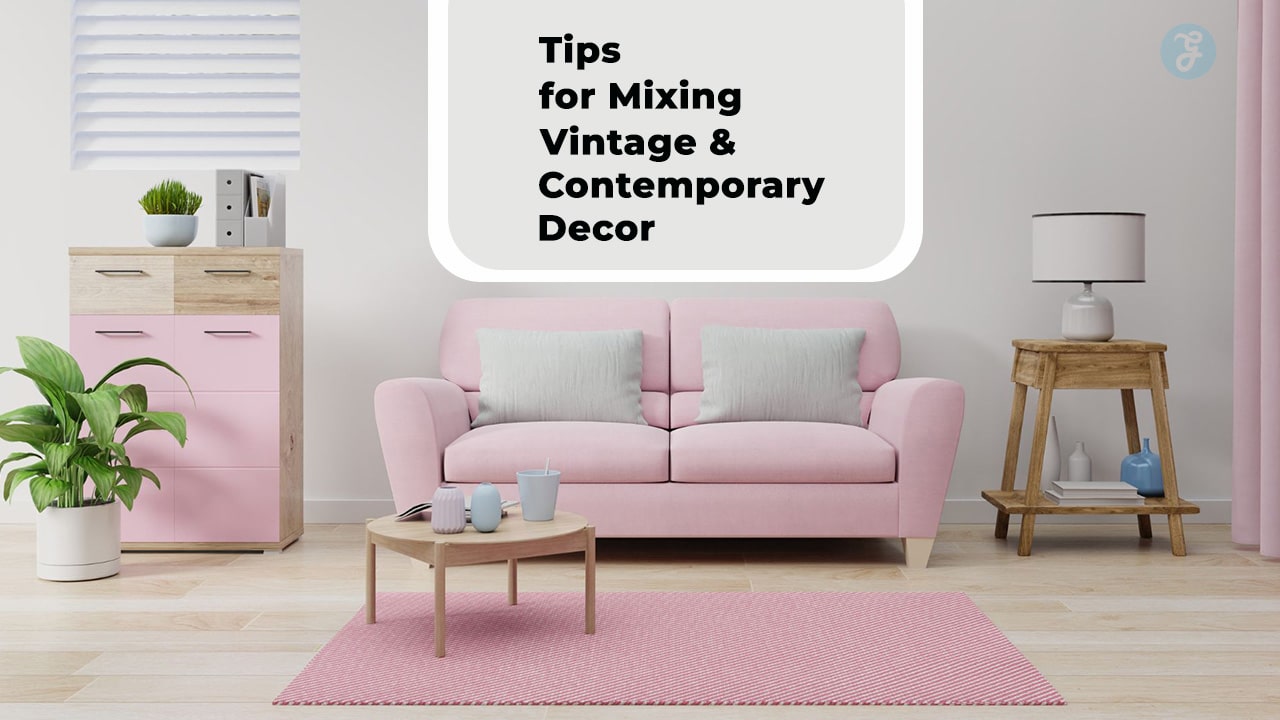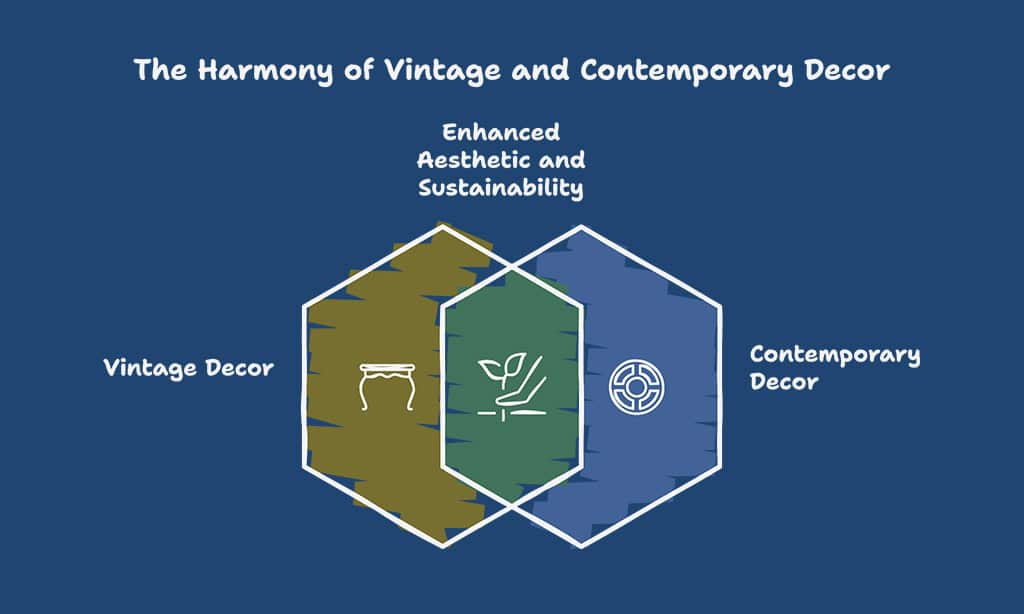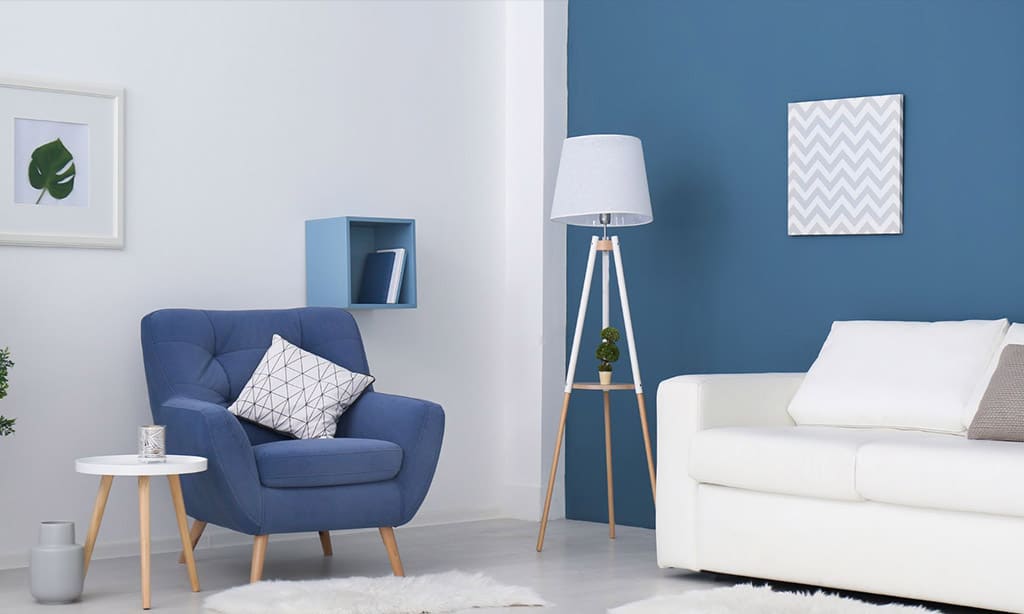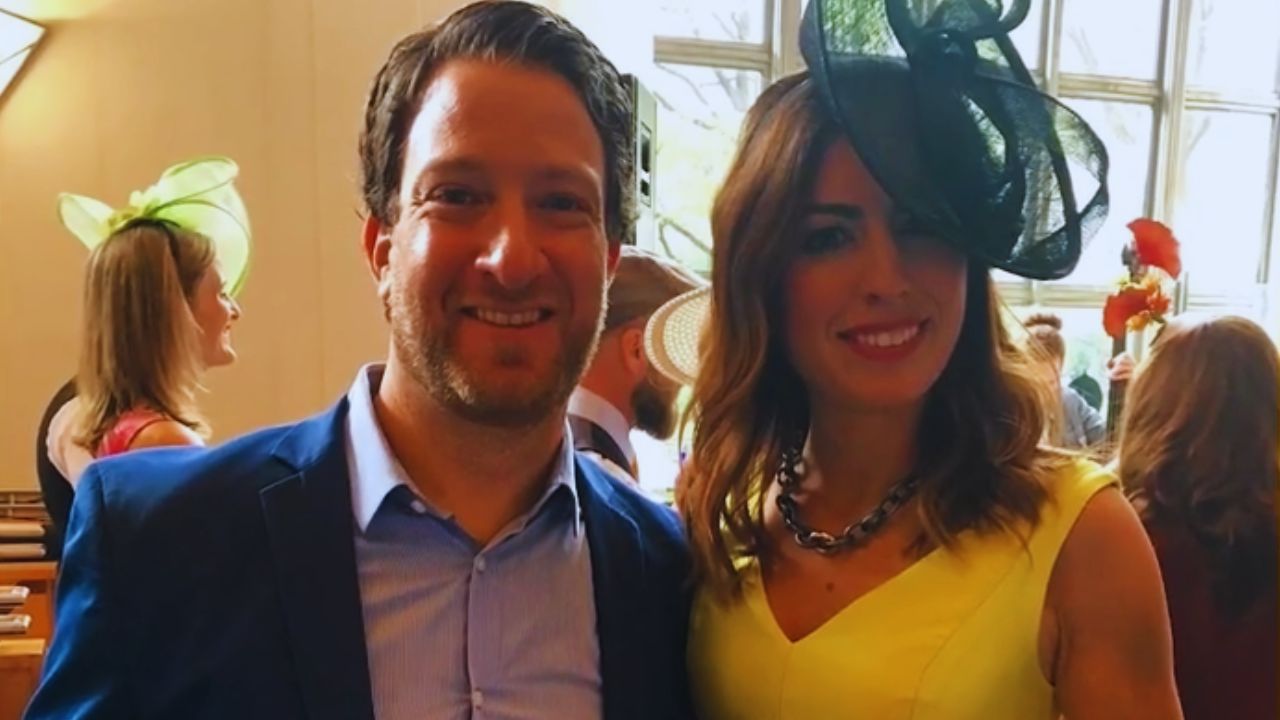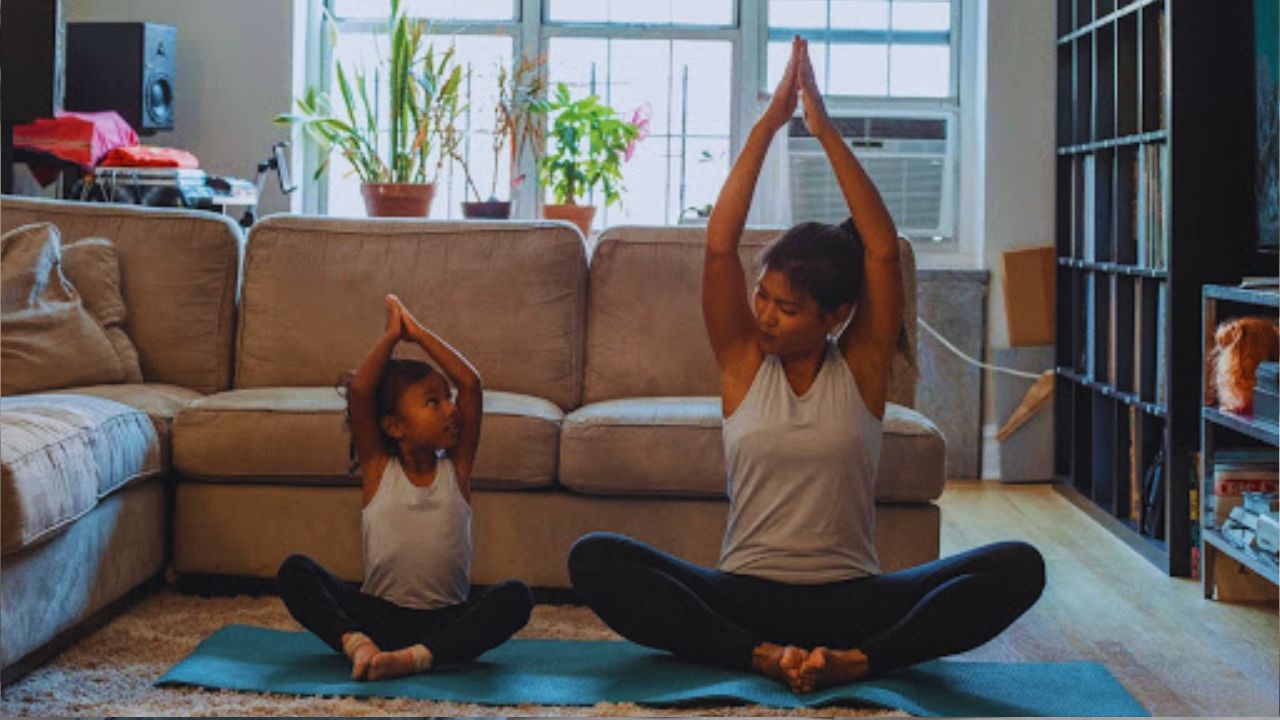Decorating a home involves creating a space that resonates with your personality and lifestyle. One of the most exciting and visually intriguing ways to approach home decor is by blending vintage and contemporary styles.
Whether you’re drawn to the history and character of vintage pieces or the clean lines and functionality of modern design, combining both elements can yield a truly unique and timeless space.
In this guide, we’ll explore 10 effective mixing vintage and contemporary decor tips to help you create a balanced and harmonious living environment.
Why Mixing Vintage and Contemporary Decor Works
Mixing vintage and contemporary decor isn’t just a passing trend; it’s a powerful design choice that allows you to infuse personality and depth into your space. Vintage decor adds character, warmth, and a sense of nostalgia, while contemporary design introduces clean lines, modern functionality, and a fresh aesthetic.
When done correctly, this fusion of old and new can make your home feel dynamic, creative, and welcoming. The beauty of mixing vintage with contemporary is the contrast and balance it brings—timeless pieces work alongside fresh, sleek designs to create a living space that feels both nostalgic and current.
This fusion of styles has gained immense popularity because it allows homeowners to express their individuality and tell a personal story through their design choices.
Not only does this trend promote sustainability by encouraging the use of antique, pre-loved furniture and decor, but it also results in a cohesive yet eclectic atmosphere. In the following sections, we’ll explore mixing vintage and contemporary decor tips that will help you achieve the perfect balance.
Benefits of Combining Old and New Styles
- Timeless Appeal: Vintage pieces are timeless, enduring through the ages due to their classic designs and craftsmanship. When paired with contemporary elements, they create a balanced, long-lasting aesthetic that will never feel outdated.
- Personalization: The fusion of vintage and contemporary allows you to inject personality into your home. It gives you the freedom to incorporate a range of styles, making your space feel truly unique to you.
- Sustainability: Choosing vintage items reduces your carbon footprint by giving pre-owned goods a second life, which is better for the environment. This practice also contributes to reducing the demand for mass-produced, new items.
- Visual Interest: The contrast between old-world charm and modern flair can create a visually stimulating environment. The interplay of different design styles can elevate the overall look of the room.
Now, let’s break down mixing vintage and contemporary decor tips to help you get started on creating a stunning, functional space.
Tip #1 – Start with a Neutral Base
A neutral color palette serves as an ideal foundation for mixing vintage and contemporary decor. Neutrals like whites, grays, beiges, and soft taupes provide a versatile backdrop that allows other design elements to stand out without overwhelming the space.
This is especially important when incorporating various textures, colors, and design styles. By using neutral tones for walls, floors, and larger furniture pieces, you ensure that both vintage and contemporary elements complement each other rather than compete for attention.
Benefits of Neutral Tones in Mixing Styles
- Flexibility: Neutral tones are highly adaptable, allowing them to work seamlessly with a wide variety of vintage and modern furnishings. These shades also make it easier to swap out decor pieces without clashing with the room’s base.
- Visual Cohesion: Neutrals create a cohesive and calming atmosphere, ensuring that the different elements in your space feel connected, even if they come from different design eras.
- Clarity: With a neutral background, your vintage and modern elements will pop without feeling chaotic or cluttered.
Example of Neutral Base Color Palette
| Color Type | Description | Examples |
| Wall Colors | Soft, light, and airy hues that work with all styles | Benjamin Moore White Dove, Sherwin Williams Agreeable Gray |
| Flooring | Light wood, tile, or concrete that complements vintage and modern pieces | Oak hardwood, gray polished concrete, light-colored ceramic tile |
| Accents | Subtle additions like neutral-toned curtains or accessories | Linen, beige, ivory, charcoal gray |
Tip #2 – Embrace Contrasting Textures
Textures are key when combining vintage and contemporary styles. Vintage pieces often feature rich, tactile materials like plush velvet, polished wood, and luxurious leather, while contemporary design tends to incorporate sleek and industrial materials such as glass, concrete, and steel. By embracing contrasting textures, you can create depth and visual interest while also striking a balance between the warmth and the sleekness of the two styles.
How Textures Enhance the Mix of Vintage and Contemporary
- Richness and Warmth: Vintage items often feature rich textures, such as a leather armchair or a wooden coffee table. These elements add a sense of coziness and comfort to a room.
- Modern Cleanliness: Contemporary design tends to favor smooth and sleek surfaces, such as metal frames, glass tables, and minimalist finishes. This contrast prevents the room from feeling heavy or overly ornate.
- Tactile Variety: Combining soft textures [like velvet or wool] with hard surfaces [like metal or glass] can add depth to your space, inviting a dynamic interplay of materials.
Texture Pairing Ideas [Table/Graphic]
| Vintage Texture | Modern Texture | Combination Effect |
| Leather | Glass or Lucite | Warmth of leather balances the coolness of glass |
| Wood | Steel or Aluminum | Rustic, organic wood contrasts with sleek, shiny steel |
| Velvet | Concrete or Acrylic | Softness of velvet juxtaposes the coolness of concrete, creating a balanced look |
Tip #3 – Use Statement Pieces as Focal Points
Vintage furniture can serve as the focal point of a room, offering a narrative and personality to the space. Whether it’s a mid-century modern chair, a vintage wooden armoire, or a retro sofa, these pieces often have unique characteristics, such as detailed craftsmanship or striking design. Incorporating a vintage statement piece into a modern space can inject history and soul into the room.
Incorporating Contemporary Art and Sculptures
When pairing vintage furniture with modern elements, consider adding contemporary artwork or sculptures to create an exciting juxtaposition. A modern, abstract painting can elevate a vintage wood-framed sofa, while minimalist sculptures or geometric artwork can add visual weight and balance to a room full of traditional elements.
Examples of Effective Statement Piece Combinations
- Mid-Century Modern Armchair and Contemporary Abstract Art: A vintage mid-century armchair paired with a bold, colorful abstract art piece creates a beautiful contrast between the smooth curves of vintage design and the sharp lines of modern art.
- Victorian Sofa and Minimalist Lighting: A Victorian-style sofa with intricate carvings, paired with a minimalist, sleek pendant light, balances the opulence of the sofa with the simplicity of the lighting fixture.
Tip #4 – Balance Proportions in Furniture
Vintage furniture tends to be larger and more intricate, while contemporary furniture is often sleek, lightweight, and streamlined. Achieving the perfect balance means pairing larger vintage furniture pieces with modern elements that have more modest proportions. For example, a large vintage wooden dining table might pair beautifully with slim, contemporary dining chairs, offering both elegance and space-saving functionality.
Visual Harmony Between Different Furniture Sizes
Maintaining proportional balance ensures that the space feels organized and cohesive. Too many oversized vintage pieces could overwhelm a room, while too many sleek, minimalist pieces might not provide enough warmth or personality. Consider the space available and mix furniture styles that create visual flow.
Furniture Pairing Tips and Mistakes to Avoid
- Tip: Use oversized vintage pieces as anchors in the room and balance them with lighter, smaller modern furniture. This approach keeps the space from feeling too cluttered or imbalanced.
- Mistake to Avoid: Avoid overcrowding a small space with large vintage items, as they can dominate the room and make it feel cramped. Opt for smaller vintage accents instead.
Tip #5 – Play with Color Schemes
Vintage decor is often associated with rich, bold colors like deep reds, mustard yellows, and muted greens. Contemporary styles, on the other hand, tend to lean towards neutral shades like whites, grays, and blacks. The key to mixing these color schemes is to find a balance between the two. By pairing classic vintage colors with contemporary neutrals, you can create a look that’s both striking and sophisticated.
Adding Accent Colors to Tie the Styles Together
Accent colors can be used to seamlessly integrate the two styles. Think of a bold vintage armchair in a rich blue paired with neutral contemporary walls, or a mustard vintage rug with gray modern furnishings. Accent colors like teal, gold, and coral can add vibrancy without overpowering the space.
Color Scheme Examples for Vintage-Contemporary Mix
| Vintage Color | Contemporary Color | Accent Color |
| Burgundy | Soft Gray | Gold |
| Mustard Yellow | White | Navy Blue |
| Olive Green | Charcoal Black | Burnt Orange |
Tip #6 – Layering Old and New Textiles
Textiles are a powerful tool in mixing vintage and contemporary decor. A vintage rug can provide warmth and personality to a space, while modern throws or cushions add a contemporary touch. The layering of textiles not only enhances comfort but also brings a tactile richness to the space, making it feel inviting and cozy.
Pillows and Curtains that Bridge Both Worlds
Look for pillows and curtains that combine both vintage patterns and modern colors. This could mean a vintage floral-patterned pillow in a muted hue paired with a modern solid-color curtain. Such combinations will add richness without overwhelming the space.
Textile Layering Tips and Examples
- Tip: Try to match the textures rather than the colors when layering textiles. Pair a vintage leather chair with a modern wool throw to combine tactile differences that feel harmonious.
- Mistake to Avoid: Avoid mixing too many patterns in one room, as it can create visual chaos. Instead, stick to a few key textiles that support your overall color and design theme.
Tip #7 – Create a Conversation Between Old and New Art
Vintage art adds depth and soul to contemporary spaces. Whether it’s an antique painting, a retro print, or a vintage photograph, these pieces bring history and narrative to a modern environment. A well-placed vintage artwork can become a conversation starter while also balancing out the simplicity of contemporary design.
Choosing Contemporary Art to Complement Vintage Decor
On the flip side, contemporary art can provide the necessary freshness to offset the formality of vintage decor. Bold, modern pieces like geometric prints or minimalistic paintings can contrast beautifully with ornate vintage furniture and decor, keeping the room feeling dynamic and interesting.
Display Strategies for Art in Mixed Spaces
- Tip: Consider creating a gallery wall that blends both vintage and contemporary art. This can allow both styles to shine without feeling out of place.
- Mistake to Avoid: Don’t overcrowd the walls. Let each art piece breathe by spacing them out thoughtfully.
Tip #8 – Focus on Lighting for a Harmonious Blend
Lighting is a critical element when mixing vintage and contemporary decor. Vintage lighting fixtures such as chandeliers, sconces, or retro pendant lights can add character and a sense of luxury to your space. When combined with modern lighting fixtures like recessed lights, pendant lamps, or LED fixtures, they help create the perfect balance between old and new.
How Modern Lighting Complements Classic Decor Styles
Modern lighting is often sleek, simple, and functional, providing a subtle yet essential role in your design. Combining these with vintage lighting adds a layer of richness, preventing the room from feeling too stark or minimalist.
Lighting Tips and Ideas for Perfect Balance
- Tip: Mix ambient, task, and accent lighting to illuminate both vintage and modern elements. Use dimmers to create mood lighting that highlights different areas of the room.
- Mistake to Avoid: Don’t overcrowd the room with too many vintage light fixtures. Pair a few statement pieces with more subtle, contemporary lighting to maintain balance.
Tip #9 – Incorporate Modern Technology with Vintage Charm
Incorporating modern technology like smart speakers, thermostats, or home automation systems with vintage furniture and decor requires subtlety. Choose technology that complements your room’s aesthetic without dominating it. For example, a sleek smart speaker can blend beautifully into a vintage bookshelf or be concealed within a wooden cabinet.
How to Keep Technology Subtle in Vintage-Inspired Spaces
Opt for technology that doesn’t disrupt the overall aesthetic. For example, hide cables and devices, and integrate them into furniture pieces that complement the design style of the room.
Smart Device Placement for Seamless Integration
- Tip: Conceal technology behind vintage furniture pieces like credenzas or antique tables.
- Mistake to Avoid: Placing smart devices in the middle of the room, where they disrupt the aesthetic. Instead, look for ways to integrate them discreetly.
Tip #10 – Personalize Your Space with Curated Finds
The final tip in mixing vintage and contemporary decor is to personalize your space with curated finds. Combining sentimental vintage items with modern accessories allows you to tell a story through your decor, making the space more reflective of your personal journey.
How to Curate Your Decor to Match Both Styles
Think about mixing family heirlooms, travel mementos, or vintage collections with contemporary pieces that align with your current tastes. This approach creates a unique atmosphere that feels both lived-in and timeless.
Curated Decor Checklist for the Perfect Mix
| Vintage Items | Modern Accents | Personal Touches |
| Antique furniture | Sleek lighting fixtures | Books, plants, personal mementos |
| Family heirlooms | Minimalist decor | Travel souvenirs, curated collections |
| Vintage rugs | Clean-lined artwork | Photos and keepsakes |
Takeaways
Mixing vintage and contemporary decor is all about balance. By following these mixing vintage and contemporary decor tips, you can create a space that reflects both the charm of the past and the freshness of the present.
Whether you start with neutral tones, embrace contrasting textures, or curate your decor with personal finds, the result will be a home that is uniquely yours—timeless, functional, and full of personality.


